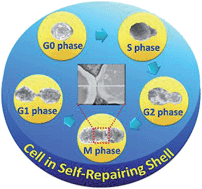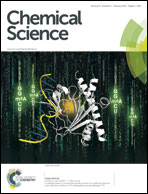“Self-repairing” nanoshell for cell protection†
Abstract
Self-repair is nature's way of protecting living organisms. However, most single cells are inherently less capable of self-repairing, which greatly limits their wide applications. Here, we present a self-assembly approach to create a nanoshell around the cell surface using nanoporous biohybrid aggregates. The biohybrid shells present self-repairing behaviour, resulting in high activity and extended viability of the encapsulated cells (eukaryotic and prokaryotic cells) in harsh micro-environments, such as under UV radiation, natural toxin invasion, high-light radiation and abrupt pH-value changes. Furthermore, an interaction mechanism is proposed and studied, which is successful to guide design and synthesis of self-repairing biohybrid shells using different bioactive molecules.


 Please wait while we load your content...
Please wait while we load your content...